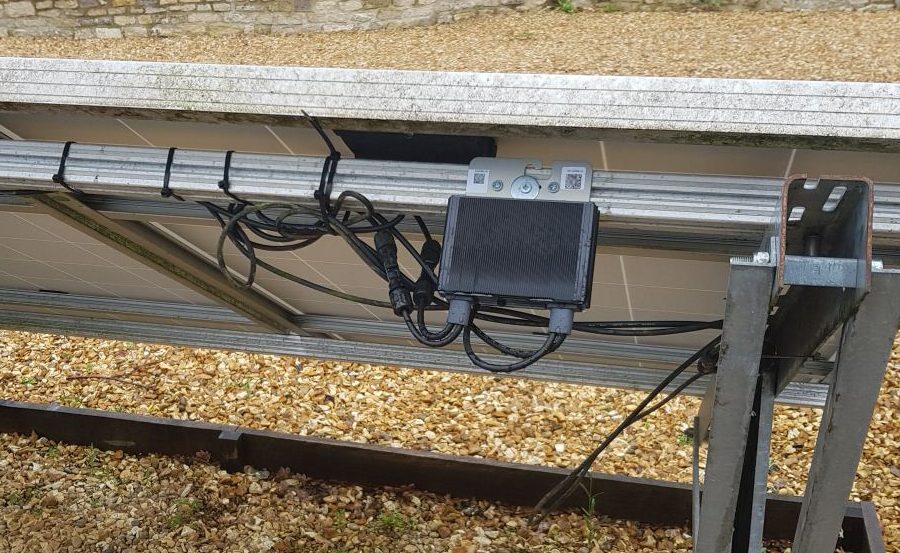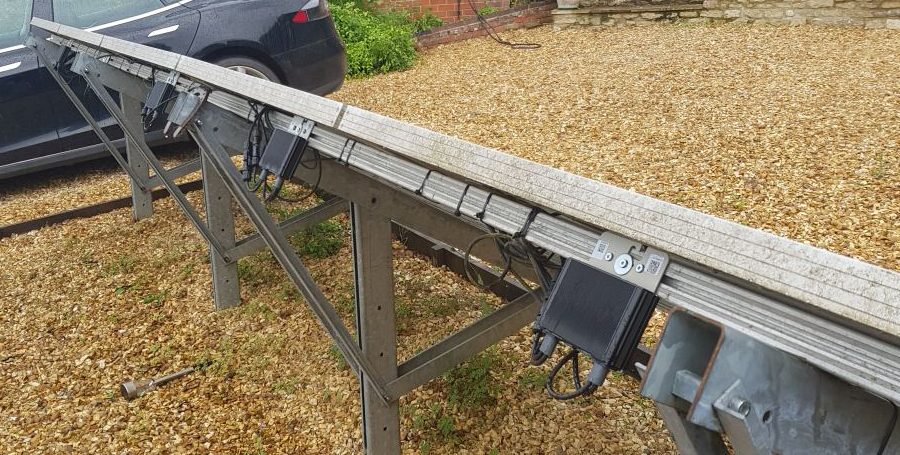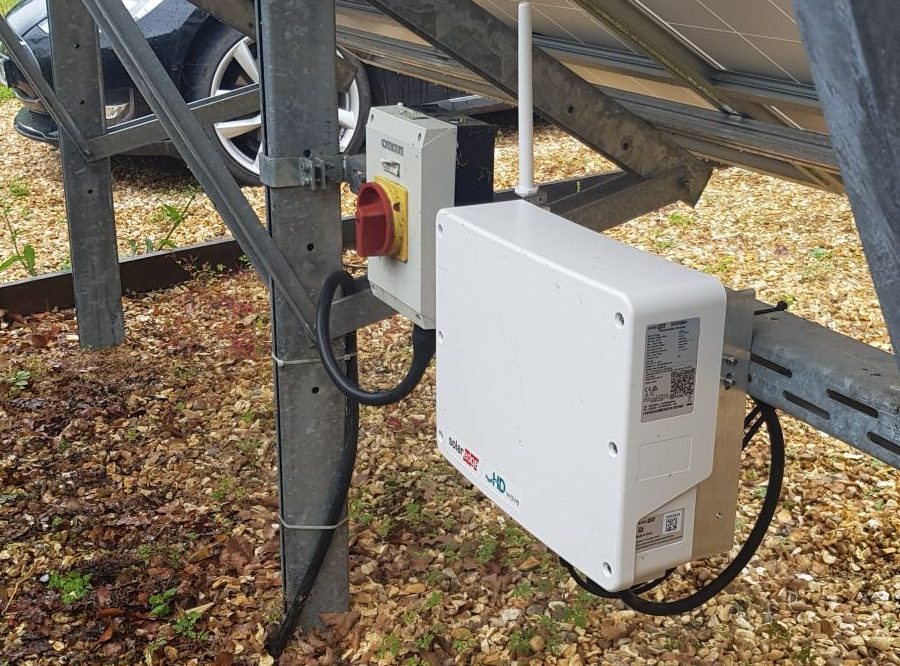Yesterday I got my ground mount solar panels upgraded to solar edge. This is something people very rarely do, for very sensible reasons, so I thought I’d blog about it, as its something you wont ever find explained.
As some background, I have a 10-panel ground mount solar array in my driveway. We live in an very old ‘listed’ building in the UK so we cannot have roof mounted solar, but I’m a huge fan of green energy and wanted them anyway. 10 panels is all we could fit in the vaguely sunny part of the driveway so thats what we got, and the peak output is 2.1kw. Thats pretty low, and by Californian standards hilariously low, but this is the UK, and we don’t even have air-con (but I DO have an electric car to charge).
Because there is no other sunny part of the garden, and the neighbors are not likely to sell me extra space to put solar,m I have ended up starting a company to build a solar farm, but it still frustrates me that we are not energy independent at home. This is REALLY hard to do for an old house in the UK without a huge flat un-shaded garden. Thus I took it upon myself to try and squeeze as much efficiency out of our existing solar panels as possible. Enter solar edge!
Solar edge is a system that is almost ALWAYS fitted when you get new solar panels (if you opt for it, most don’t), and rarely done as a an upgrade. As an upgrade, it makes very sketchy financial sense, unless you are in my position, have variable shading, and are desperate for higher efficiency.
Solar edge fixes a problem in the way solar panels are wired, that almost no homeowners realize. They are wired so that power flows from one panel to the next, and the next, until eventually they reach the inverter, and get converted from DC to AC. What this means is, in practice, if you have 10 solar panels and solar panel number 1 is shaded, then the output of ALL TEN panels is reduced.
Yes really.
In almost all ground mount, and many rooftop installations, this does not matter. But if you have partial shading at some point during the day, or if you have constant shading of just one panel, you lose a massive amount of potential output. It also means that solar panels have to ideally all be facing the exact same way (not both sides of a roof, unless you literally live at the equator), and be the same type/output. Otherwise you are losing energy.
Solar edge is essentially a bunch of widgets (optimisers) that get wired onto the back of each panel. here is one on one of my panels:

All most all of that extra cabling and cable ties is due to the solar edge system, so its actually a lot of annoying, slow, fiddly work to do it. You need one of these for every single panel:

They are also not cheap, but frankly these days even if they cost $10, the main cost is getting an electrical engineer to come wire everything up. As ever, humans are the point at which renewable energy gets most of its costs these days… Anyway, you also get a new inverter, which is a lot smaller and simpler than many others. Like most inverters these days, it can talk to your wireless network and give you internet-based tracking of everything:

The beauty of this system for people with complex roofs is that a single inverter can now manage multiple groups of panels, even when one might be slightly shaded in the afternoon when the other is in full sunlight. The thing is, it also helps for stuff like partial shading due to clouds, or maybe in my case treetops which will affect coverage for one panel but not others. Check out this screenshot from the solar edge site:

Thats taken at a specific time this morning, around 10am, where either clouds or treetops have shaded a lot of the panels, except panels 4 and 8. In this case they get to produce 65w and 68w, instead of being limited to the 40w of that first panel. (its a cloudy day today, normally output would be way higher!)
What is especially cool about the site is it has a sort of ‘scrubber’ where you can slide through time on any day and see the output of each panel at each point in time. It will also show you total power for the day/week/month for each panel, so you can work out if one of the panels is maybe covered in bird crap or some fine dust, or if it has a technical problem and is failing. Its also apparently safer in case of electrical fires and faults.
This is all total nerdgasm silliness that only someone like me would ever actually do, because the extra output is likely about 10% and the costs are in the thousands, so although yup, I did get a spanking new inverter out of it, the actual economics of it make little sense in the UK, unless your inverter is failing anyway.
However, if you ARE thinking of getting solar, have a complex roof and some shading at parts of the day from a neighbors tree or a power-line or phone line, it may well be worth considering a solar edge setup.